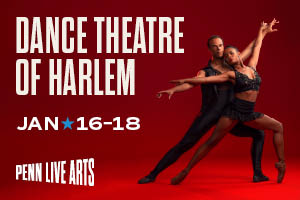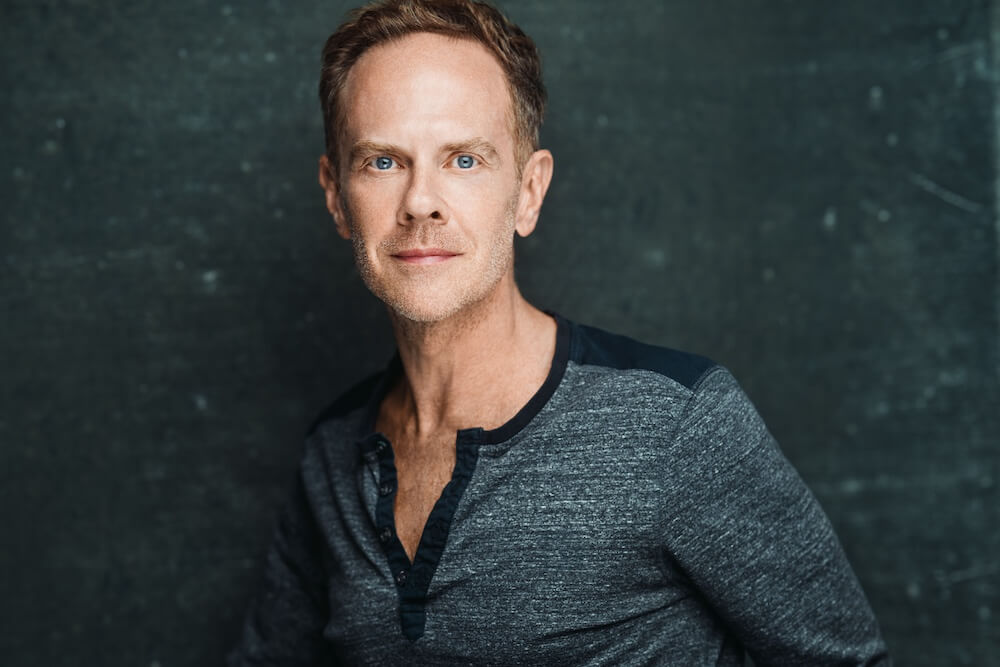The act of looking to the past, longingly, is about as universal a human experience as they come. But nostalgia can easily turn into a creative cul de sac—longing for longing’s sake, or just one long pull on the audience’s heartstrings. When an artist employs nostalgia in conversation with the present, a more powerful alchemy results. The present self becomes a site of exploration—an amalgamation of childhood experiences, body image, societal expectations, the political culture surrounding our parents and ourselves, and so on.
In April, I saw Rosie Herrera Dance Theatre perform work new and old. The former, a solo performed by Herrera, Cookie’s Kid, was a wonderful meditation on nostalgia. It started with Herrera lingering behind a tall fringe curtain, languidly trailing her hand through the strands before breaking the threshold. While the curtain was a little campy, it also provided a gorgeous backdrop for Herrera’s projections of old family videos. Sepia-toned snippets of familiar scenes, such as a child holding a parent’s hand, gently fluttered with the fringe, emphasizing the shifting magic of memory. Throughout the evening, Herrera’s pairing of sets and props with resonant personal symbols seamlessly blended the past and the present.
Herrera’s movements were exact and technically excellent as she made her way across the stage. Several times she interrupted her choreographic flow with moments of stillness. There wasn’t much to glean from a narrative or symbolic standpoint, but the pacing was steady throughout the work. In the past I’ve had difficulty with long solo works, perceiving in them a tendency to run out of ideas, coherency, and steam. But Cookie’s Kid progressed at a steady clip, interspersing camp and audience interaction with deeply touching personal moments, including pieces of original music and poetry by her maternal grandmother. The piece exceeded my limited expectations of extended solo work, and in doing so, increased my appreciation of the genre.
As the work progressed, Herrera brought out a blender and made a kale, banana, and almond milk smoothie. The audience laughed at the over-the-top theatricality of the sequence, which nonetheless conjured notions of femininity and control of the body. The blender was loud and violent—a counterpoint to the love and care behind the tradition of preparing food.
Later, Herrera found a Spanish-speaking audience member to come on stage to translate for her while she lip-synced to a treacly Spanish pop song. He was endearing and goofy, and the section evinced Herrera’s vulnerability, empathy, personal history, identity, and frustration at her world not being understood. It was impossible not to consider this section in relation to the particularly heightened (and existential) threats surrounding immigrants and their families. More than ever, perhaps, the act of translation is as political as it is important to center and champion.
In the final section, Herrera set up the stage to look like a Mary Magdalene devotional scene. She took out a large chocolate bunny and melted it with a hair dryer. This bizarre and unexpected moment—both in symbolism and in how it fit with the larger work—elicited more laughter, but I saw it as disturbing (wonderfully so), an act of violence and wry subversion of any number of themes (motherhood, rebirth, Catholicism, etc.). It was quite the punctuation point, and at intermission it was all the audience could talk about.
The second work was an excerpt from Dining Alone, another example of Herrera’s use of theatre technique to create evocative narratives. In its edited form, it didn’t resonate with me as much as Cookie’s Kid. While there were moments of extreme and surreal beauty, I wanted more, and hope I have an opportunity to see the whole work in the future.
Dining Alone was set with black chairs and cafe tables that were reminiscent of Pina Bausch’s iconic Cafe Müller (and I wouldn’t be surprised if Herrera was paying homage to Bausch). The work was a series of dreamy and romantic vignettes involving tables, chairs, plates, and food.
In one intimate duet, a performer laid down white dinner plates for another to walk on like stepping stones. Slow and drawn out, the sequence traversed the stage on a diagonal and then reversed itself, one foot and one plate at a time. It read like a line of poetry, an image I’ll be able to cite for a long time.
If Dining Alone was more contemplative and subdued than Cookie’s Kid, it shared with the solo an effective act of audience interaction. The last scene ended with a dancer setting up a table and chair directly in front of a woman sitting in the front row. Before she knew what was going on, two plates of spaghetti were brought to their table, and that’s how the piece ended: two people smiling over food, sharing the moment with a warm and generous audience. It was touching and fitting end for the evening.
Cookie’s Kid and Dining Alone, Rosie Herrera Dance Theatre, Dance Place, April 8-9.
For more information: https://www.facebook.com/rosieherreradancetheater/






